Beginner’s Guide to Dry Fire Training at Home
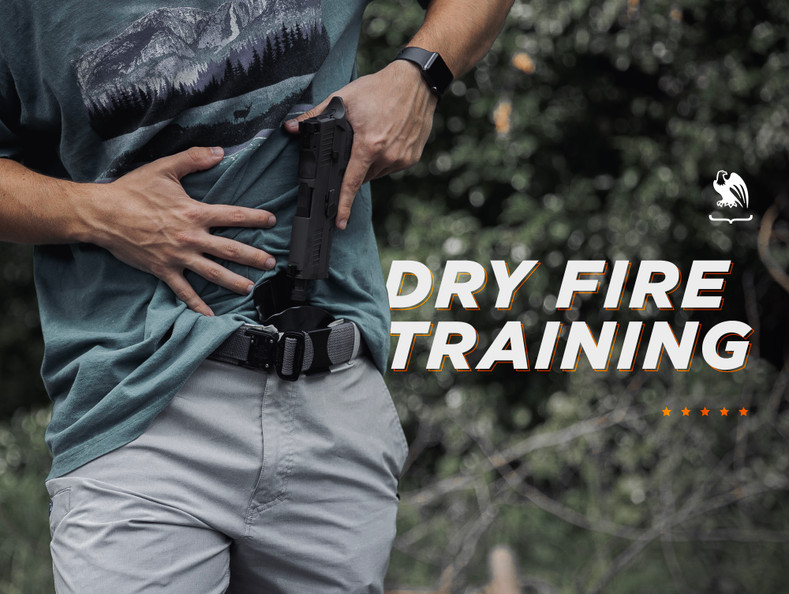
Training, training, training. We all know we should do it, but sometimes it can be hard to justify blocking out time for the range and spending a chunk of money on ammo only to shoot it all up inside an hour.
But what if we told you there was a way to train for free, at home, on your schedule?
Whether you’re new to carrying a gun or are looking to improve your skills, dry fire training is a great way to get in some extra practice without breaking the bank at the range.
Let’s start by going over what dry firing is and why you should work it into your training routine.
What is Dry Fire Training?
In a nutshell, “dry fire training” is the art of practicing gun handling techniques with an unloaded firearm. That can include everything from practicing your draw to performing drills in which you actually pull the trigger.
The idea is that training with an unloaded gun at home allows you to practice more often and more consistently, thereby improving certain skills. It’s a great way to practice drawing, aiming, and holstering your weapon, as well as to fine-tune your trigger pull and grip techniques.
The beauty of this training tactic is that you can do it anywhere, for any period of time, and it’s free. And, while you can invest in a special dry fire training system, you can do it with just your gun and a few minutes of time.
Dry firing is designed to be a supplemental training activity, not to replace traditional live fire practice. That being said, pairing these two training methods together can really help take your gun handling skills to the next level.
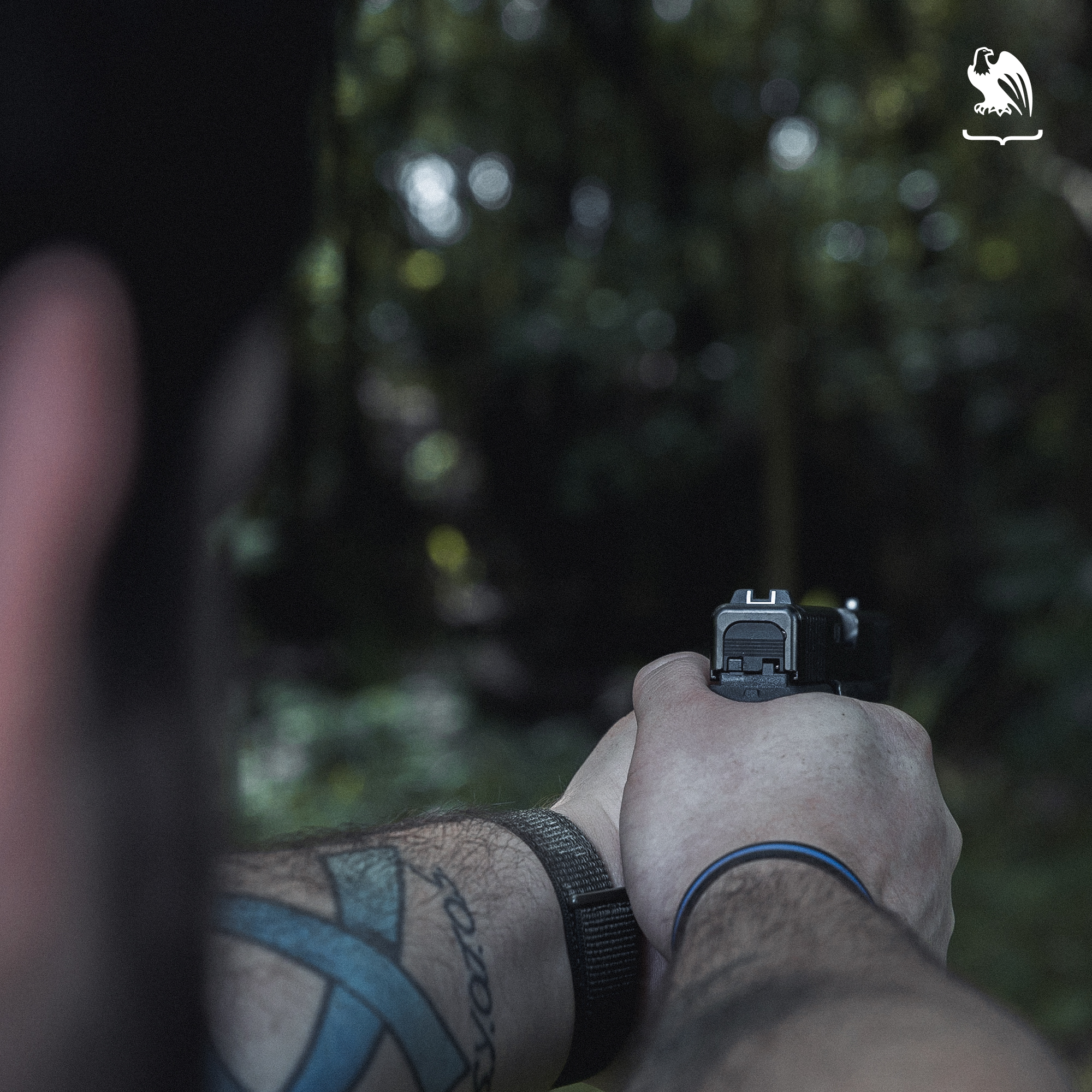
Why Dry Fire?
Beyond the fact that it’s fun (which it is!), there are many benefits to dry fire training.
First and foremost, it allows you to train more often than you normally would. Going to the range is time-consuming and often costly, so many of us don’t go as often as we should. When you practice at home, you can do it as often as you like without making a huge time commitment. Even 5 minutes a day is a great start!
Along those lines, dry fire training is free. No range costs, no paying for overpriced ammo, no nothing. It effectively removes the excuse that “it’s too expensive to train.”
Another great reason for this type of training is that you can perform different drills than at a range. For example, most ranges don’t allow you to draw and fire from a holster unless you’re taking a class. This is done for safety reasons, but it prevents you from practicing your draw and fire technique, which is a critical skill to have as a firearm owner.
When you train with an unloaded weapon, you can practice these moves that you would otherwise not be able to do, for free, in your own home. So the real question is, why not dry fire?
Is It Bad to Dry Fire a Gun?
You may have heard that firing your gun without a round in the chamber is bad for it. But don’t worry; we wouldn’t tell you to do something that would be bad for your weapon!
The reality is that dry firing is entirely safe and won’t harm your gun in any way– with the exception of a few specific types of firearms. If you own a rimfire, dry firing can cause some damage and is not recommended.
Rimfire guns are designed in a way that when you pull the trigger, the firing pin actually hits the rim of the casing. So, when you try to fire without a round in the chamber, the pin hits the rim of the chamber instead, causing damage to both the chamber and the firing pin over time. This is true even with the use of a dummy round, though that can help minimize the harm significantly.
Some older firearms can also run into issues with dry firing.But, if you own a modern, non-rimfire gun, you can rest assured that no damage will be caused by pulling the trigger without a round in the chamber. If you’re unsure whether it’s safe to dry fire your pistol, check your owner’s manual.
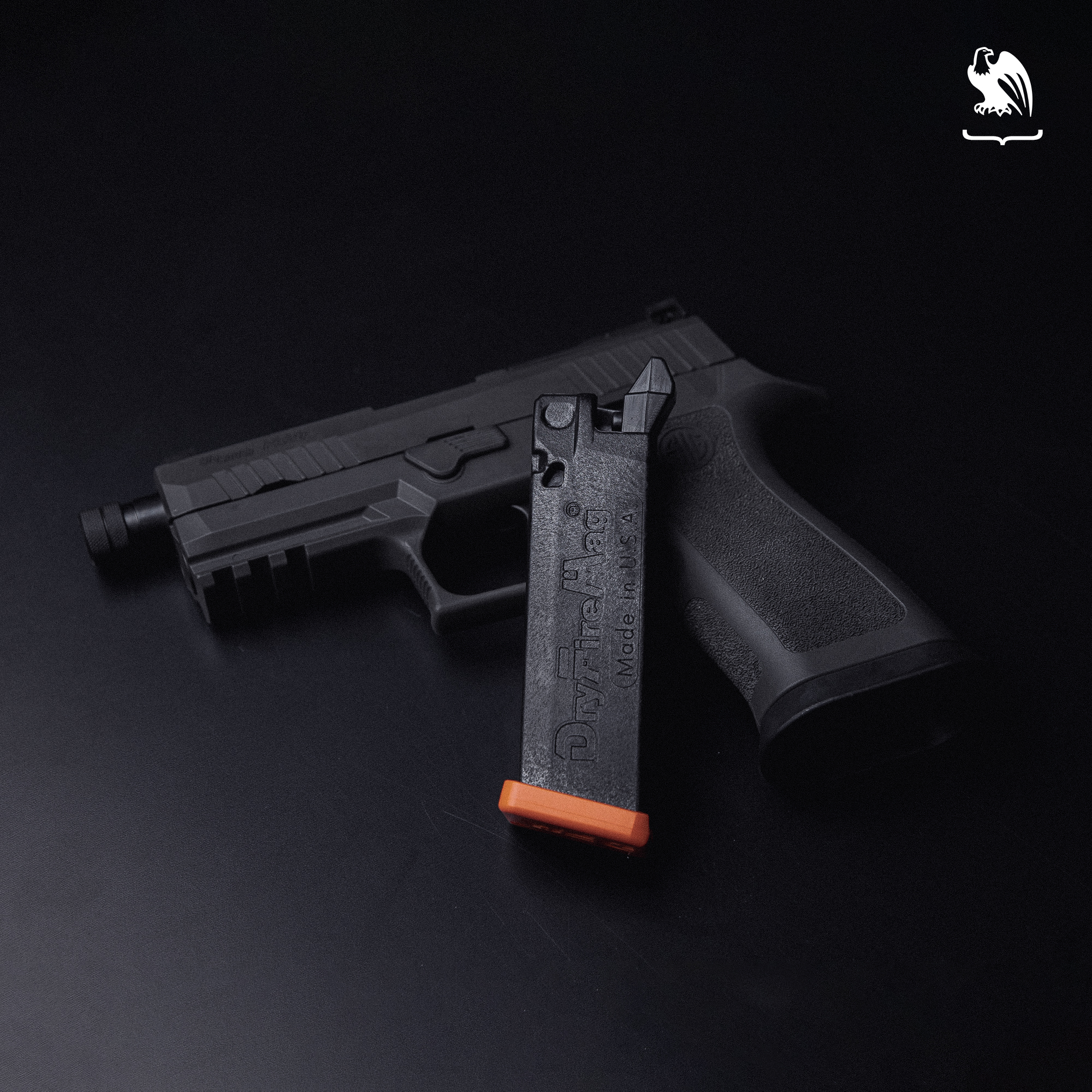
How to Dry Fire a Gun
While there are countless dry fire training drills you can practice, the basics of dry firing a gun is pretty simple.
Basically, all you need to do is clear your firearm, choose a target, draw your weapon, align your sights, press the trigger, and reholster. If you want to keep it even more basic, you don’t even have to draw and holster your gun – though we recommend it for training purposes.
You can make it as straightforward or as complicated as you want. The point is just to do it. We’ll talk next about some of the systems and drills you can use to help get more out of your dry fire exercises.
Types of Dry Fire Training Systems
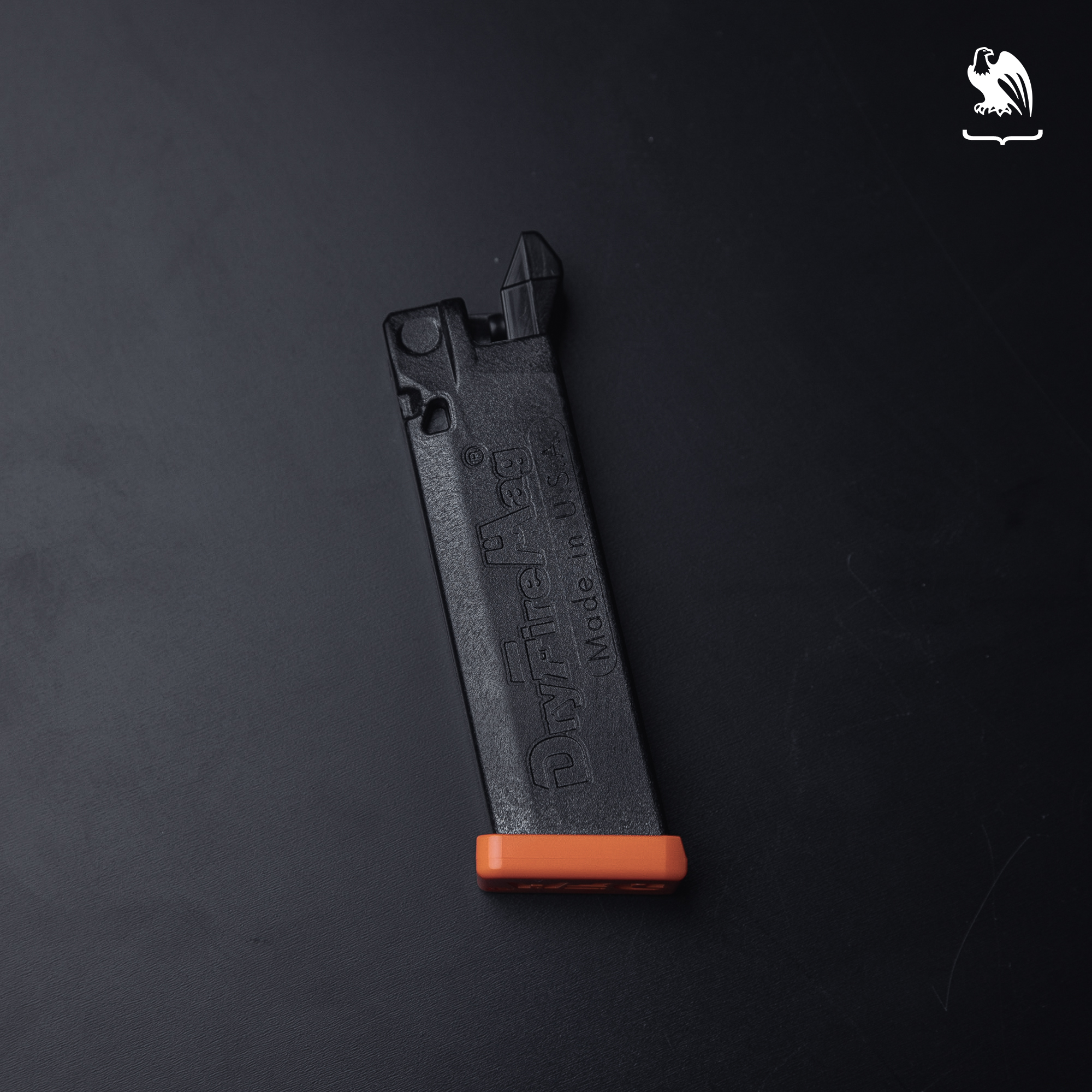
While you don’t need any special equipment to dry fire effectively, it can certainly help. Here are some of the best dry fire training system options on the market today.
Dry Fire Magazine
Easily the most frustrating part about dry firing is that you have to rack the slide of your pistol after every shot so you can pull the trigger again. Not only is this super inconvenient, but it takes away from a more realistic experience and slows down your process.
Luckily, a Dry Fire Mag can solve this problem.
These handy tools replace a traditional magazine and simulate the firing pin release and trigger reset in your gun so you can fire successive shots without having to rack the slide.
A dry fire mag is almost a necessity if you plan to do any dry fire training beyond simply practicing your draw. You don’t have to use one, but you’ll wish you did!
Laser Training System
A laser dry fire training system is one of the most popular, and for good reason.
Because you’re not actually firing any bullets, it’s nearly impossible to tell whether your “shots” are accurate when dry firing. That’s where a laser system comes in. These handy gadgets allow you to see exactly where your gun is aiming and where your shot would have landed in a real situation.
While this on its own is useful, when paired with a camera and/or tracking system, you can collect data on how accurate your shots are so you can fine-tune skills like trigger control, draw form, reloading speed, and target acquisition.
These inexpensive systems take on a number of different forms, the cheapest of which is a simple laser training cartridge. These little devices pop into the chamber of your gun and shine a laser out of the barrel each time you pull the trigger, allowing you to see where your shot would have landed. The only downside to these cartridges is that they don’t pair super well with a dry fire magazine, so it’s best to pick one or the other (or use them separately).
These cartridges are often paired with more intricate systems like Mantis or LaserHit training kits, which combine a laser with a physical target and/or your phone, so you can easily track your gun’s motion, shots, and timing to get more accurate, real-time data about your shooting that you can use to improve over time.
Recoil Simulator
One of the biggest downsides of dry firing is that there is no recoil. Luckily, there is a dry fire system that can fix that.
A recoil simulator provides a more realistic experience by using CO2 or another gas to create a simulated recoil action. Systems like those made by LaserShot simply convert your current gun into a training weapon, complete with a laser and recoil simulator.
While it’s not quite the same as firing a live round, recoil simulators can help you train for things like flinching, recoil management, and target re-acquisition.
Snap Caps
Fake cartridges, or snap caps, are an excellent tool for dry fire as they allow you to load and fire your weapon like you usually would, only they don’t actually fire. Snap caps are typically brightly colored and have special primers that prevent firing pin damage when you pull the trigger.
Because these fake rounds have the same rough weight and feel as regular ammunition, you can practice reloading, clearing jams, and racking the slide like you would in reality.
These are a great option to pair with another dry fire training system or to use on their own for more realistic training.
Shot Timer
One of the most basic and useful dry fire tools you can get is a shot timer. These little gadgets work by registering the sound of a gunshot and recording the time it takes between each shot, as well as the total time you spent shooting.
While this obviously won’t be too useful with dry firing, as there is no audible shot when you pull the trigger, these handy tools also allow you to set a timer that you can then race against.
This forces you to work fast and – paired with a shot journal – can help you keep track of your progress.
You can download shot timer apps like Splits and Dry Fire Par Time Tracker for free or buy a physical competition timer online for around $100-150.
Dry Fire Training Drills
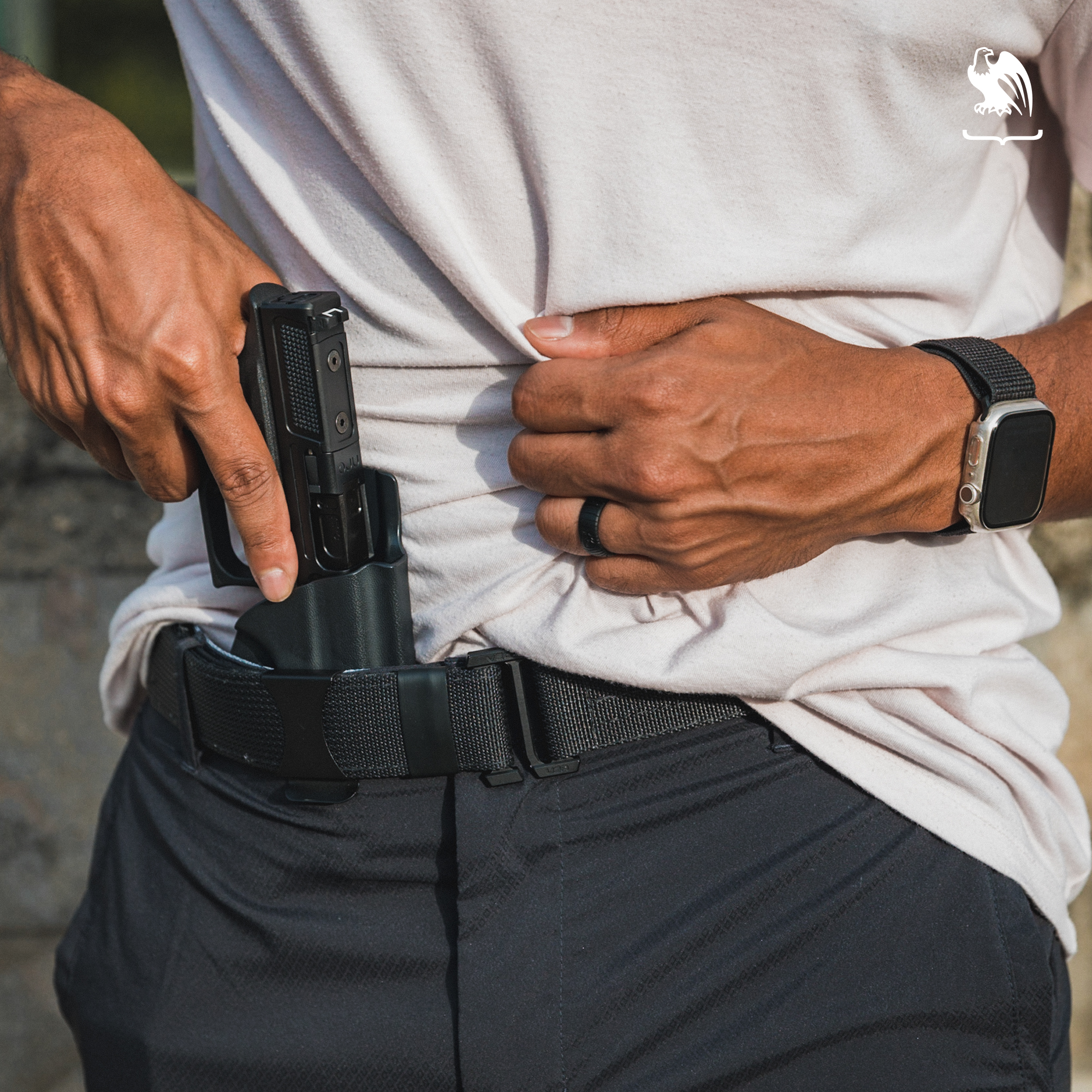
While pretty much any practical shooting skill can be practiced through dry firing, here are some easy dry fire training drills to get you started:
Draw to First Shot
The idea behind this drill is to clean up your draw. Because a fast and safe draw is one of the most important parts of shooting, especially if you conceal carry, this is a great drill to start with.
To perform this drill, start by holstering your weapon as you normally would. From there, practice clearing your cover garment with your non-dominant hand, properly gripping your pistol, and drawing your gun. Then, without flagging yourself or anyone else, point the firearm at the target, take your aim, disengage the safety (if it has one), and pull the trigger. Then reholster your gun.
Once you’ve got the basic movements down, use a mirror or record yourself so you can adjust your form as necessary. As your skill increases, start using a timer and work to speed the process up. Keep track in a journal so you can watch your progress.
The idea behind this exercise is to perfect your draw, aim, shoot, and holster technique. It’s the most basic drill, but it’s also the most important and is the foundation for all the rest of your training.
Reloading Drills
Practicing your reloading skills is essential – especially if you carry a spare magazine.
This simple drill can be done however you want. You can go through the process of drawing and “firing” your weapon before ejecting and replacing your magazine, or you can practice reloading a new mag on its own.
This is one of those times when snap or dummy rounds come in handy. You can use these rounds to simulate running out of ammo and then replacing your magazine.
Like with the “draw to first shot” drill, timing yourself and watching your form are great ways to critique your performance.
Target Transitioning
Another great training technique is to set up multiple targets and practice transitioning between them.
Two or three targets are plenty, though you can get as crazy as you’d like! Though not essential, this drill is where a laser system and/or recoil simulator really shines. Transitioning from target to target is easy when dry firing, but when you throw recoil into the mix, it gets a lot more complicated.
Whatever tools you decide to use, start by aiming and shooting at the first target, then smoothly transition over to the next. Take your aim, and pull the trigger again. This drill helps practice sight acquisition and, when paired with a simulator, helps you practice your recoil management as well.
Practical Training
This drill is a lot of fun because you can essentially make up any scenario you want.
For this drill, you’ll want to think about a dangerous situation you could face, set it up, and practice defending yourself. You want to put yourself in a realistic situation, which requires a bit of setup.
One scenario you can practice is setting up a target in one room, then walking around the corner and “responding” quickly to the threat. That means clearing your cover garment, drawing your weapon, using your “command voice” to yell at the target, aiming, pulling the trigger, then holstering your gun.
You can also use this “freestyle” form of training to practice shooting from different positions, like seated, prone, single-handed, and from behind cover, all of which help you become a better shooter.
Once again, timing and recording yourself in different scenarios can be helpful so you can gauge your reaction time and see where you need to improve.
You can feel free to get as creative as you like with this one as long as you’re still practicing the four rules of gun safety (keep scrolling if you don’t know what those are). You can even get someone else to place a target somewhere in a room for you so you don’t know where it is when you walk in, which adds a level of suspense and makes your reaction more realistic.
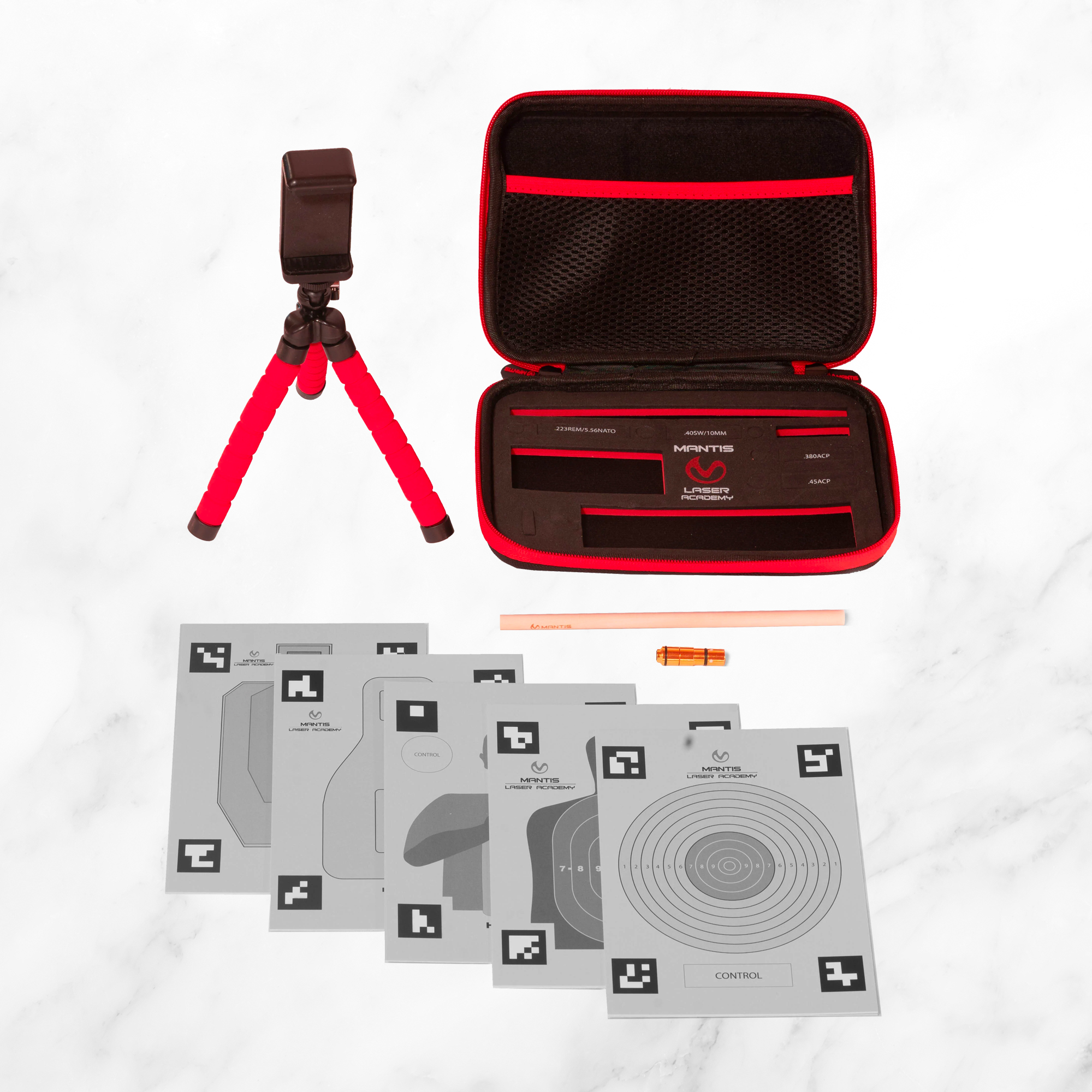
How Often Should I Practice Dry Firing?
Okay. So we’ve established that dry fire training is something you should work into your training schedule. But how often is necessary to be effective?
Unfortunately, there’s no magic number for how long or often you should train. It all comes down to your schedule, level of expertise, and dedication.
As a general rule, we recommend dry fire training anywhere from once a week to once a day. We know it can be hard to work in a training session every single day, but three to four times a week is a nice balance that’s easy to commit to.
Think about it. If you want to see results at the gym, you can’t reach your goals by working out once a month. Dry firing is the same thing. The more you do it, the better and faster the results will be.
That being said, it’s pretty easy to work in a quick session every day or every other day. All you really need is a quick 10-15 minutes to get in some good training. If you practice less often, like once a week or so, you might want to extend your training to 20-30 minutes or longer to be effective.
Dry Fire Training Safety Tips
Even though dry firing involves working with an unloaded gun, there are a number of crucial safety tips to follow to ensure an accident won’t happen.
First and foremost, make sure your weapon is unloaded. Eject the magazine to ensure it’s empty, and lock the slide to the rear so you can visually verify that there is no round in the chamber. In fact, it’s a good practice to keep any ammo out of the room you’re training in, so there’s no risk of accidentally loading your gun until you’re absolutely sure you’re finished with your drills for the day.
“During a dry practice session, you simply can't check your gun often enough to make sure it is unloaded,” Jim Wilson writes for NRA Family.
Next, always practice the four rules of firearm safety. Even though your weapon is unloaded, you should still keep these safety fundamentals in mind. Not only will it help ensure nothing goes wrong, but it also helps reinforce the habit of proper safety and should be considered part of your training.
In case you need a refresher, here are the four rules of gun safety:
- Treat every gun as if it is loaded – even if you know it’s not.
- Never point a firearm at anything you aren’t willing to destroy. That means watching where your muzzle points during drawing and holstering so you don’t accidentally flag yourself or someone else. It also means never pointing your gun at another person for “training purposes.” Ever.
- Keep your finger off the trigger until you are ready to fire. Once your sights are confirmed and you are pointing at something you’re willing to shoot, then you can move your finger to the trigger – but not before.
- Be absolutely sure of your target and know what lies beyond it. That means thinking about what’s on the other side of the wall, too.
Another safety tip is to never let your weapon leave your sight during training. If, for any reason, your gun is out of your control for any period of time, even if you leave the room for only a minute, reclear it before resuming training. You never know if someone else picked up the firearm and popped a round in the chamber while you were gone.
Thinking about these simple safety rules and running a mental (or physical) checklist prior to starting your dry fire drills will ensure a fun and safe training session so you can focus on what you came to do.
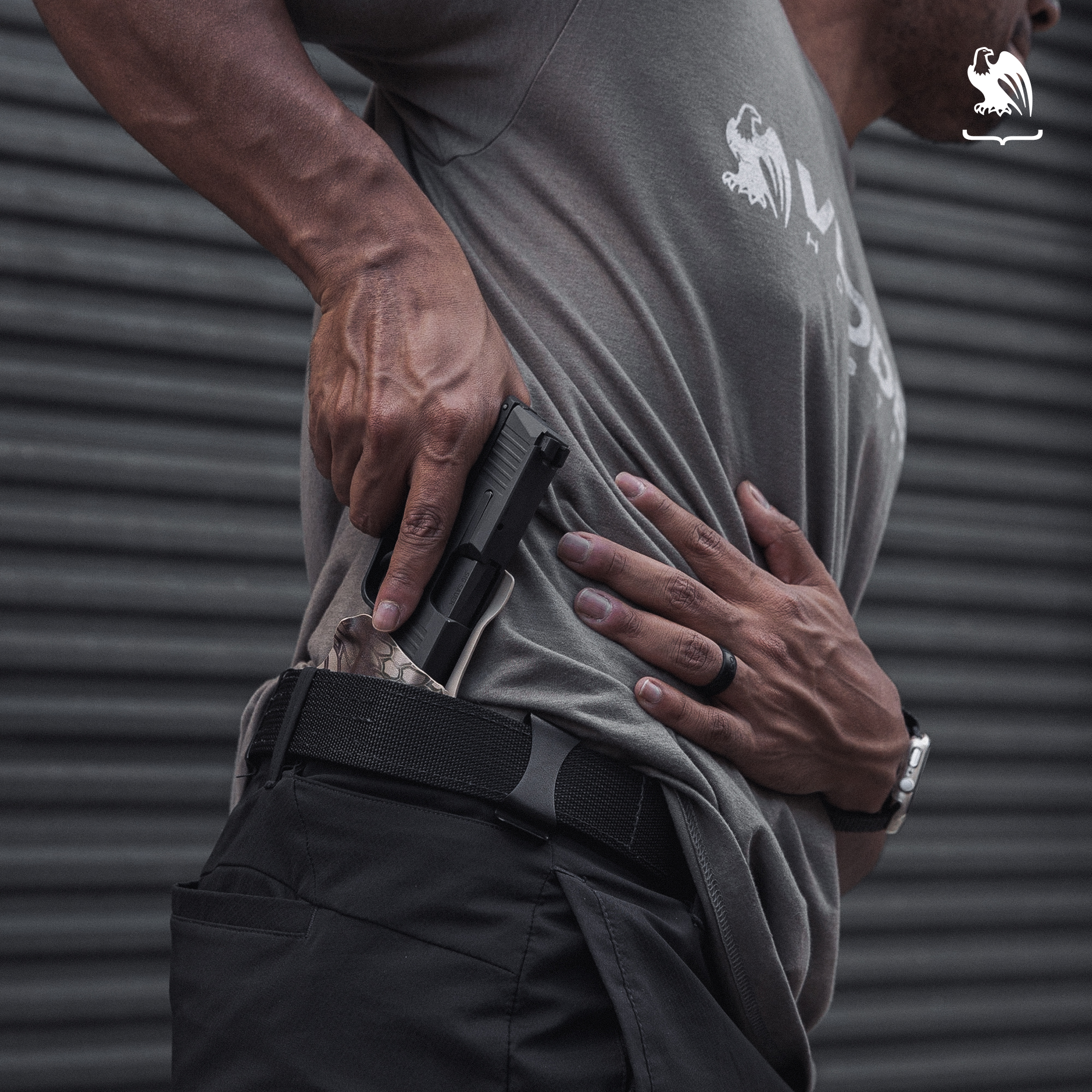
Tips for Successful Dry Fire Training
Be Consistent
If there’s one point we want to drive home, it’s that a successful dry fire training routine must be consistent. The idea behind training is to build muscle memory and improve your skill set – neither of which can be achieved by practicing once or twice. It takes consistent, regular practice to see the results you’re looking for.
Invest in Quality Gear
We’ve already talked about the different dry fire system options out there. And while it’s important that the system you choose is a quality one, it’s not the only gear you should think about investing in.
No matter what kind of training you’re doing, a high-quality belt and holster setup can make a world of difference. You do a lot of drawing and holstering during dry fire training, and a flimsy, low-end holster can make this process incredibly frustrating.
If you’re in need of a quality gun belt to keep everything securely in place during your dry fire sessions, we recommend the Vedder Holsters Cobra® or V3 tactical belts, both of which are made from durable, dual-webbed nylon designed to stay stiff and rigid during concealed carry and training.
If you’re looking for a quality Kydex or hybrid IWB, OWB, or pocket carry holster, visit our Holsters by Gun Model page to check out our selection of comfortable, adjustable holsters.
Take a Class
One of the downsides to dry fire training is that you’re effectively on your own when it comes to scrutinizing your own technique and form. That’s why it’s a great idea to start with a class where you can get pointers from a certified instructor. Once you’ve established a baseline and gained some feedback on your performance, you can practice what you learned at home.
“If you are continually practicing skills the wrong way, you will end up with a training scar. So, first step is to get good instruction and let it sink in,” firearms trainer Kevin Michalowski writes in a USCCA article.
Don’t Neglect Your Range Time
As effective as dry fire training is, it can’t be the only training technique you exercise. A well-rounded training regimen that includes a balance of dry fire practice and live fire training is the best way to perfect your gun handling skills and prepare for a self-defense encounter. Dry fire is meant to be a supplemental training system, not the only one.
Summary
Dry fire training is a convenient and helpful way to practice your gun handling techniques at home. Not only is it a great way to reinforce different techniques, but it also allows you to do so without paying for costly ammunition and range time.
Choosing the right dry fire equipment and a quality gun belt and holster all contribute to successful drills at home.
If you’re looking for belts or holsters for other handgun models, we recommend visiting our Holsters by Gun Model page if you are looking for holsters that are custom-made for your weapon of choice. For all of our belt and holster options and for more information to help you choose the carry system that works best for you, visit our Vedder Holsters website.
Looking for items beyond holsters and belts? Check out our Resources Page for popular product links like lights, lasers, first aid, maintenance, and more.

